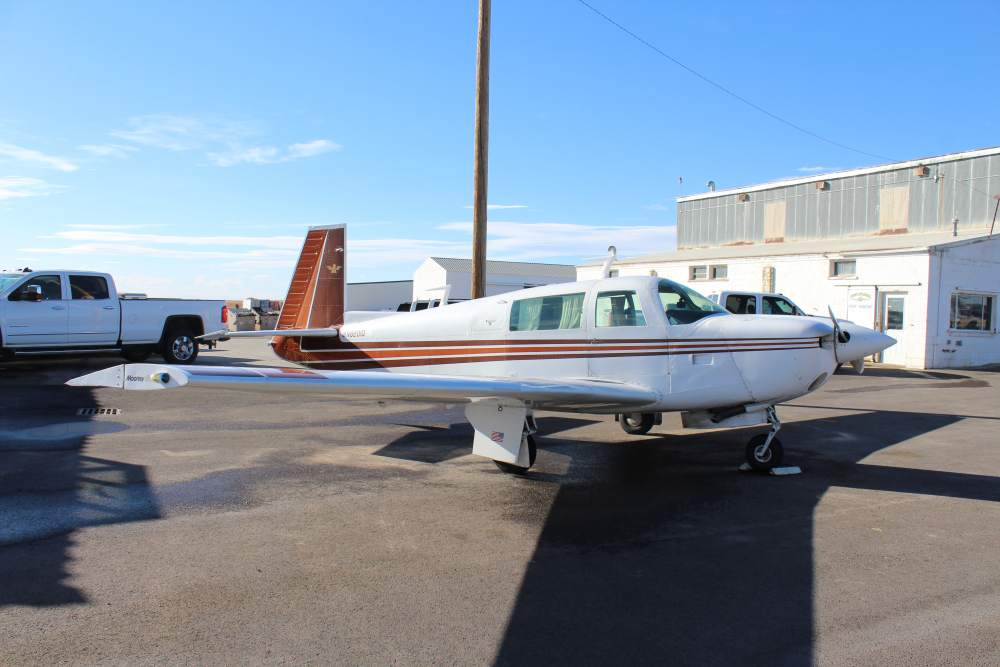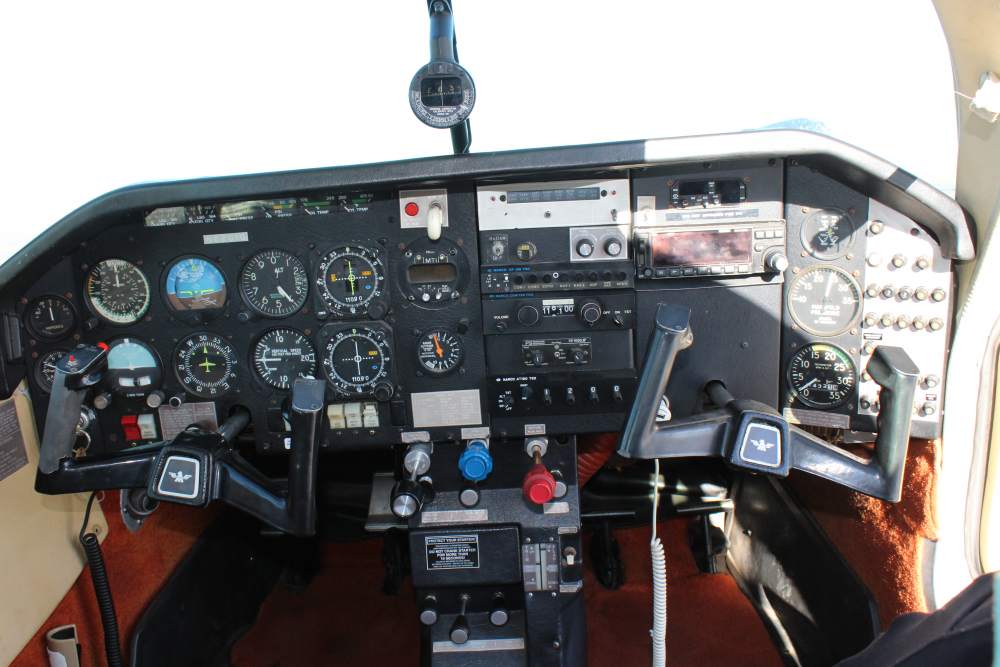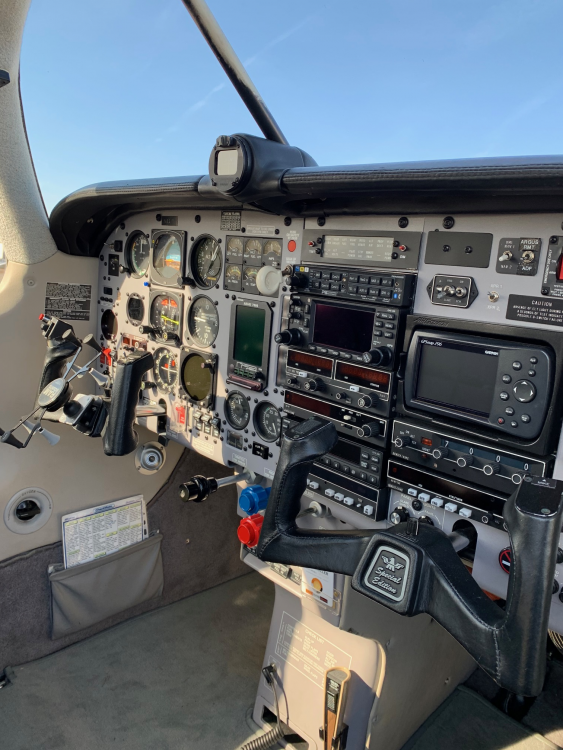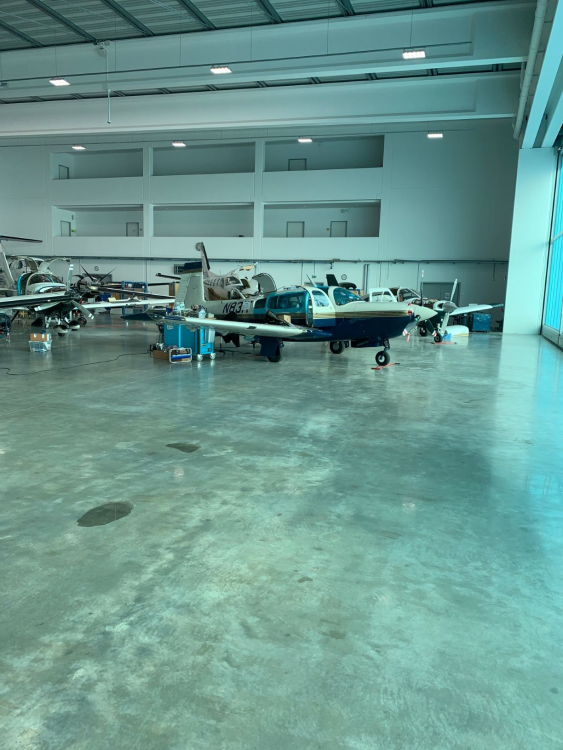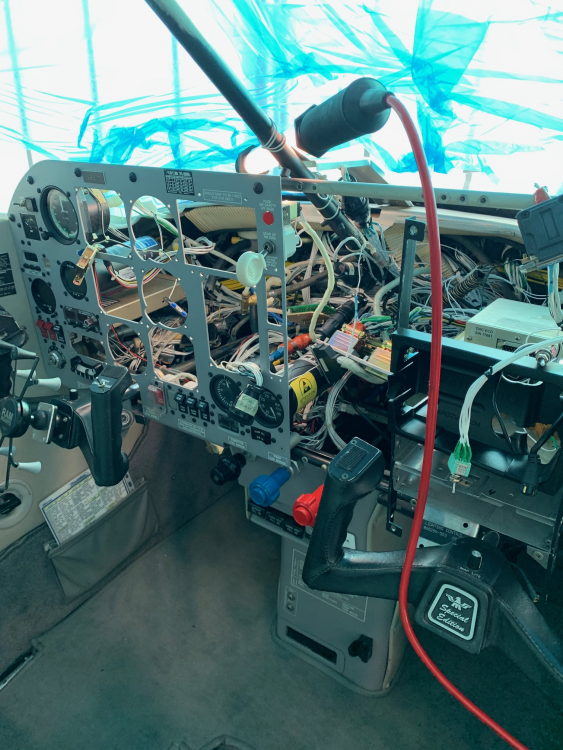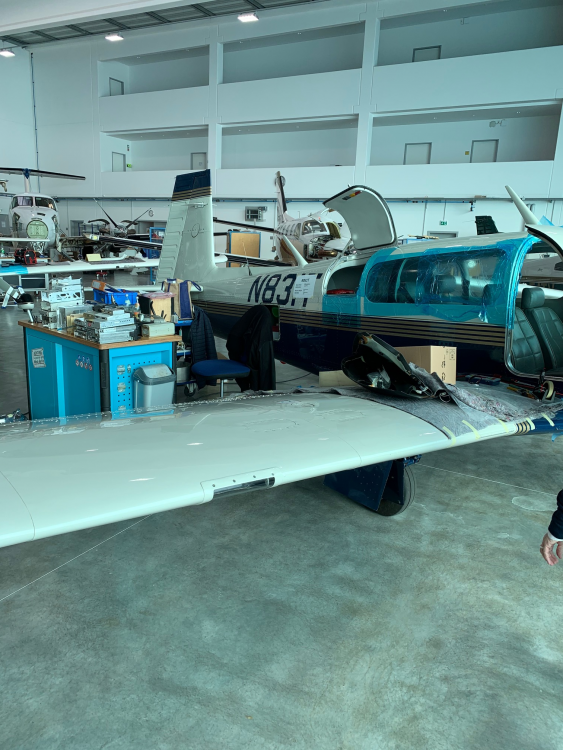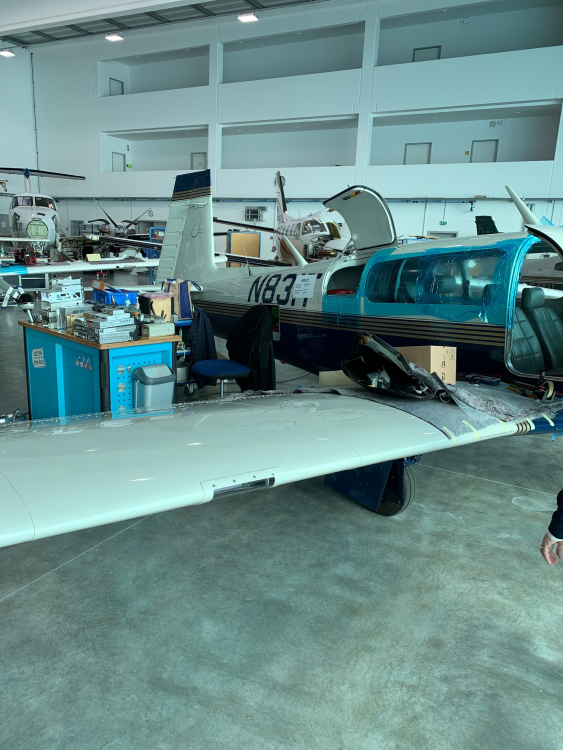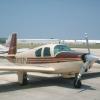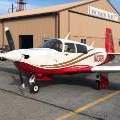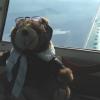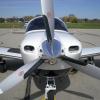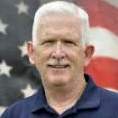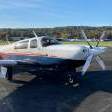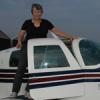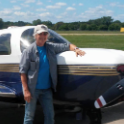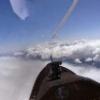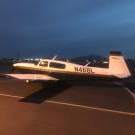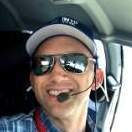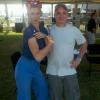Leaderboard
Popular Content
Showing content with the highest reputation on 02/26/2021 in all areas
-
With the help of some MSrs, I signed up for this beauty on Wednesday. She has to pass her physical next Friday and I have to come up with the scratch. @gsxrpilot and friend were sooo giving of their time and expertise. I only hope I can pay it forward. There's so much that I and the plane need. If ya look at that completed that list it will make you turn to drink. But I do have one important question; should I go for the leather flight jacket or the Captain's hat with epaulets look?10 points
-
@Warren and I had a great time helping @john buhrman look over this 201. John took everyone's advice and within 24 hours of finding this one for sale, he jumped in his truck with his two dogs and drove straight through from Dillon, MT to Fort Morgan, CO to look it over and seal the deal. @Warren and I took his 231 and flew up from Denver (BJC) to help him look it over and give an opinion on the purchase. It's an all original 201 that's been a "work truck" for an aviation business and used for ferrying crews around the western states. There's room for some new avionics and the interior is what you'd expect in a work truck. But the John got a great deal on a regularly flying 201 with a mid-time engine. Welcome to the Mooney family!8 points
-
When actually teaching, I can convince a person to move to my way of thinking through the action of demonstrations, not words alone. On a forum like this, unfortunately, words are the only thing that can be used. Sometimes the certainty that comes through years of experience and expressed through words comes across as arrogance, and for that I apologize. My goal is to make anyone who cares to listen a better pilot by the most appropriate means available.6 points
-
5 points
-
4 points
-
3 points
-
If you want to talk aircraft power plant installation and operation you talk to Bob Minnis THE GURU of any aircraft power plant installation. AND certified to do so! Haven't heard of him :-) You need to listen to him at a Mooney Convention. When HE talks I listen! Who do you think got the twin turbos to work on the Mooney? HUH? But that was just a minor issue in all he's ever done. How about a piston powered airplane that loiters at 60,000' for a day? OK you engineers think about the physics on that one for a moment. The greatest engine engineer I have ever talked with bar none. What this has to do with the OP subject I have no idea Back to the regularly scheduled program- Simple fuel system L- OFF-R If you can't remember to swap tanks maybe you don't need to fly. Try a Bonanza or a 310 or a Twin Beech or for that matter a 707. We won't even get into balancing fuel fore and aft on long range jets with tail plane tanks. One full one empty has very little affect on L-R balance OWT Get a nice looking battery watch and cut the strap ears off and velcro to your panel. How many cool functions can you find in a cheap Timex watch? Engine stops when you weren't expecting it to? SWITCH TANKS Engine stops right as you do something? REVERSE WHAT YOU JUST DID That's why my hand stays on the switch I just moved until I KNOW nothing is changing whether its a J-3 or a 757. LOP works real good in P&W R-985 radial engines with carbs IF you use some carb heat to help vaporize the after carb fuel mixture. Carb heat "helps " in O-360s a little but not much due to the different mixture spread in each intake runner.3 points
-
I have never seen anyone else on this board lose multiple probes on the same cylinder in a short time. Random idea 1) I would wonder if the diagnosis is correct? Maybe the failure is on the other side of the connector? Maybe a bad connection that gets closed again with each repair, then vibrates open. Was the probe swapped to another cylinder to verify it was bad? Random idea 2) I cannot imagine that the thermocouple is not rated for ample margin over the predictable range of exhaust temperature. But the temperature capability may just be the tip. It may be that it is getting hot in the wrong place because of an exhaust leak around the tip, and hot gas is overheating the part that is intended to be outside of the exhaust flow. Measure the hole, and see if it was overdrilled a small amount in the past.3 points
-
Proper clothing of the Established Aviation Gentleman! Best regards, -a-3 points
-
Pretty sure MooneySpace has a strict policy on selling outside of of the Vendor or Classified section, being new and all, thought I’d mention it.3 points
-
Transitioning to a Mooney (or any plane for that matter) is far more than perfecting the airspeed and parabolic sink rate reduction needed for a greaser. That is simply energy management 101. One should really seek out someone that has expertise in the areo, systems, characteristics, bad temperaments, oddities, and fragilities of the specific plane they wish to transition into. Dont just seek out someone with a herd of time in the plane, but someone can get the knowledge transferred in such a way you are a safe, efficient and well versed in all phases of your new time machine. After all, landings are nothing but another maneuver one has to master. I dont want to sound pompous, as I sure have a lot to learn yet and look forward to my flights with the jeddi's3 points
-
Hello all, Old rusty vfr pilot ready to go flying again. And since have been in love with Mooneys since I first flew one oh say 25 years ago, I figure this is the place for me. I'm now looking for a model C-J. Something I can get into and possibly out of without having too much at stake. I have secured a hanger (no easy feat) and am ready for the plane. I have been lurking here for about 2 years so I feel I have gained a good bit of knowledge, but no experience. One should not confuse the two. I'll be using the plane a bit for business (I own the company so no one can holler at me if I don't show), but mostly for pleasure. 300-600nm trips seem appropriate. I do reside in the intermountain west (SW Montana at DLN), so without a turbo and an IR, I'll have to pick my flying days. No biggie, I'm actually semi retired ish. As I have said, I have learned a lot here and feel I actually know a few of y'all. Thank you all for sharing your wit and wisdom. jb PS If anyone has a nice C-J they are willing to part with, please do let me know.2 points
-
It's been a little while since I practiced the steep spiral and power off 180 accuracy landing since the commercial checkride so I went out to practice a few. It was a strong gusty crosswind at Morristown on a warm winter day. Winds were howling across runway 5. I came over the airport at 2900ft to stay beneath the 3000ft class B floor. I thought Morristown would be more accustomed to this sort of request from practicing aircraft but it was like he heard of it for the first time. Maybe it's just the way I was taught... to continue the spiral into the accuracy landing as opposed to doing them independently. Afterall, if you ever do have an engine issue and you happen to have an airport below, it's good to have confidence to glide your way into it. Abeam the numbers I chopped the power and started the turns. There's a chance I didn't do them steep enough for "commercial" spec or ACS. I did not specifically review the requirements. However, for practical application, this turn kept the airport underneath and in sight. It was difficult staying around a point with this much crosswind. It was almost requiring a flat upwind push on the headwind and a very steep turn around the downwind. I cleared the engine after every turn. I did a total of 3 spot landing attempts. The first one, coming out of the steep spiral worked out as far as getting me on the runway safely without adding power. However, I overshot the captains bars for the spot landing so I just put in the power and went around. The strong winds and gusty conditions made me want to carry more energy to avoid a shear induced stall. However, even with an overshoot turn and a slip, I couldn't force it down on the spot with that much speed. The second time, I came out of the spiral and made the spot landing. However, I had to force it down a little prematurely so it wasn't as smooth as I would have liked. The third attempt I skipped the spiral and did the power off out of the pattern. Came around the base to final quite low and it barely looked like I would make the runway. However, having made the runway with speed in reserve, I was able to float it all out and stretch it to the touchdown zone markers for a perfect spot landing in the box. I compiled bits and pieces of the 3 attempts into a single video here showing the different elements that go into these maneuvers. If you are studying for the commercial pilot, take a look. However, be aware that having taken the checkride already, I'm a little hazy on the exact ACS requirements and these may not be exactly per what they are looking for on a checkride.2 points
-
Hang glider, so no fuel to catch fire... only reason I can think of2 points
-
How did you not end up in a ball of fire without an aoa indicator?2 points
-
2 points
-
Mooney could have saved us all a lot of trouble by illustrating this. It took me a lot of fiddling around to finally figure it out. Once you get it, the instructions make sense, but without sitting in the plane and trying things, it was clear as mud. Skip2 points
-
If you go to the Mooney website, you can download a copy of SBM20-286. Basically it calls modifications to alleviate possible heating of a connector due to undersized pins in the landing/taxi light circuits. Service Bulletins are optional for Part 91 operations at the owner/operator's discretion. I'd spend the money on LED lights which have a lower current draw and obviate the need for the change. Skip2 points
-
I use windy.com to get a feel for the likely weather conditions for a flight. One thing to note is that windy.com allows visualization of the output of four different models: European Center for Medium Range Weather Forecasting (ECMWF), NOAA Global Forecast System (GFS), NOAA North American Forecast System (NAM), and newly the German DWD Icosahedral Nonhydrostatic (ICON) models. There are raging debates about which model is "best". I'm not going to get into that. The answer varies over time and by variable (temperature, ceiling, etc.) However, when it is your a$$ on the line and you need a good wx decision, compare the output of the different models for the flight time and see how closely they agree. Agreement between the different models provides some indication of likely weather conditions. Disagreement between the different models adds uncertainty to your decision making process. These models have different resolutions, forecast horizons, and capabilities. I don't think looking at windy.com replaces a weather briefing, because it doesn't show important things like turbulence. Rather I see it as a nice add-on to a briefing. A final note. Calling a model "accurate" is never appropriate. All models are approximations and never perfect. The ECMWF and GFS models for instance run on grid sizes 0.28 degrees (~31 km) and half degree (~30NM), respectively. ICON runs on a 13 km triangular mesh. If the model forecasts a frontal boundary location near your destination, it could easily be many grids off, which is a long distance. A meteorologist would say that the model perfectly forecast the arrival of the front within a 2-hour window, when I a pilot might arrive as the front is passing when the models said it would not. I am a modeler. I work in affiliation with NOAA, but do not represent NOAA. I'm skeptical of all models. Trust them when it is easy (high pressure dominating). Doubt them when there is reason to doubt.2 points
-
Actually standing up for others is something I do in real life too. Sometimes its a fault. Sometimes its a virtue. Its not a hobby but in my opinion standing up for people is a moral duty. I am sorry if you see that as a hobby.2 points
-
I almost missed a runway once!! I was new pilot returning from a summer weekend flight of rafting on the Kern River, East of Bakerspatch [Bakerfield, CA] It was hot, tons of bugs in the air, I was tired [lesson learned] and in need of fuel. My first trip into Bakersfield airport.............controller gave me a right base for 30, cleared to land. On short final, tower asks me "what are your intentions"? WOW, I'm a new pilot, exhausted, bug city, short final, no headset back in those days [long ago and far away.....]. My brain said "huh"? So I respond, I'm cleared to land on 30 Bakersfield. Controller says........for your information, our runway is marked with the numbers 30, you're about to touch down on the taxiway!!! Yikes!!! Slight flight path correction was made. It would have been fun to be a fly on the wall in the tower once the controller released the PTT button on his mic. Some things we just don't ever forget!!!2 points
-
Consider the M20S Eagle in your search. Only 65 were built. They are 100% Ovation with economy options. Better UL and can be upgraded with the 310 HP STC. the POH performance tables go to 20,000 feet. Some Ovations have been know to make it to 25,000 feet without too much effort.2 points
-
2 points
-
@Warren and I had a nice time meeting @john buhrman and looking over a nice M20J with him.2 points
-
2 points
-
I started this thread four weeks ago with a posting about my first vaccination. Here’s a report on our second. My wife and I had our second Moderna shot 30 hours ago. It’s now the evening of the day after. The only symptom I exhibited was a sore arm this morning. I felt perfectly fine all day, and even managed to get in a 15 mile bike ride after work. My wife had a sore arm, body aches and a fever that started this morning and broke about 12 hours later. The bodyaches seem to be fading and she is feeling better. As others have noted, stronger reactions but short term.2 points
-
Partly, but rate of descent at touchdown is what causes bounces. Mooneys don't have trailing link landing gear. They have shock discs that don't damp anything; quite the opposite.2 points
-
This thread amazes me. The Navy taught thousands of aviators to fly the T-34B using low time instructors and students who had zero flight time. For many, the commercial flight to PNS was the first time they'd ever been in an airplane prior to flight school! Virtually everyone soloed on their 13th flight. Is the Mooney really so much more difficult than the T-34B? Do we have to have such incredible instructors? The Mooney is a certified airplane with very few quirks and even fewer bad habits.2 points
-
Lot's of good commentary and advice here. I'll just add a snippet of my personal road to an O3. After my PPL and a year in a flying club (about 150hrs in Piper Archers) I bought my Ovation, and had an instructor meet me to pick up my aircraft. Over the next 10 days we combined transition training with IFR training. After flying 43 hrs in 10 days I had my IR and was perfectly comfortable/confident in my Mooney. Needless to say I'm a big fan of accelerated training programs Good luck! Robert2 points
-
I had the 2nd Moderna shot on Tuesday 2/23. No temperature; not feeling 100% yesterday 2/24. Feeling near 100% 2/25 today. A little soreness in the arm. Shirley had no adverse effect at all to the 2nd shot. In 2 weeks, after immunity builds up, I'll be going back to flight instructing full steam ahead--at last.2 points
-
Yes, we just got ours done a few months ago. It’s about a 20amu adventure, and worth every penny. Cold and light, I’m off the ground in ~800’ and climbing at 1700FPM 120-130knots. Heavy is about 75% of that. We’ll see how the summer goes, but I’d imagine it’ll be good there too. Makes the “impossible turn” a little more possible. You do lose 7% glide. I can share AFM supplements. PM me you’re email if you’re interested. Plenty of threads here regarding the upgrade. I’ve read them all [emoji23] ~15amu for new top prop w/tks kit ~5amu to Mooney for a piece of paper [emoji849] You’ll also need to send prop gov out for T20 upgrade to allow 2700RPM. Fuel flows need adjusted as well. STC SA03024CH for Hartzell Prop (7498) STC SA02193CH for HP change to 310 3 prop choices: 7498: thinner, think I gained a few cruise knots 7693: more repairable Composite: much more expensive2 points
-
@apenney clean the inside of the convoluted tubing and filler door connection very well with isopropyl alcohol and let dry. Coat filler door with a layer of Dow Corning RTV Sealant 732 (color of your choice), install convoluted tubing, tighten hose clamp and allow to cure.2 points
-
I found, owning the 20K, I rarely took full advantage of that turbo. It was wonderful at 12-15000, but refilling that built in ox tank was a nuisance, required landing at a big-city airport, paying substantial sum ($100-150-ish) for a top-off, winds were often unfavorable, and I wasn’t happy with the amount of useful consciousness left at the flight levels if the connector popped loose before I saw it. As it did from time to time. That said, it was lovely to accept FL220 once when requested, just to say I did. And up high, the a/c works well in July, the buildups are skinnier, and groundspeeds eastbound, as mentioned, are gratifying. I just didn’t get up there often enough to be worth holding out for a turbocharged Mooney as nice as this normally aspirated one. I haven’t found myself out of climb power on several continent-crossing trips, and 310hp gets off even a high da airport promptly. Buy the best avionics you can afford... The rest is pure Mooney magic.2 points
-
Isn't the whole purpose of a constant speed prop, that it is climbing when you need climb and cruise when you need cruise?2 points
-
I agree. If the X-Grip was available when I bought the Tab-Tite, I probably would have gotten it. Fortunately, while not quite as open as the X-Grip, it's more open than a lot of other mounts. Fortunately, I've never overheated in 10 years of iPad use so something is going right.1 point
-
Hey, hey! Never start a fight on MooneySpace.............save it for our get togethers over pizza and beer............1 point
-
Ive taken off of truckee at 9 to 10k DA at about 350ish under gross and it was normal with the scraming eagle. the plane really climbs. I was still getting about 700 to 900ft per minute of climb. Same with big bear. The plane at full gross weight will climb just fine to 14 thousand feet. After that it starts to slow down a bit. If youre light, its a homesick angel. Off the ground in 600 feet at SL and climbing at above 1000fpm all the way up to 9000ft.1 point
-
Bought an 87. New engine with inner gear doors. My third J. At 8000 feet it trues at 172 knots at 11-12 gal/hr. Flew it home from Seattle to Detroit in 11 hours. Best J built. 160 gross increase as we text. Only J with 252 gear and 140 kt gear speed. Hope I live long enough to wear it out. Pics of panel showing 172 at level flight available. Little tailwind on my way home pushes 200 kts. I love this pristine airplane....put in a stupid parachute and they should"fly" off the shelf.1 point
-
If you're in a hospital these days, if you even MENTION you have legs, they'll come chasing you down with the venous doppler ultrasound. 20 years ago, nobody would have known about it1 point
-
Not sure where you are located in Utah. Our F has a 3 blade prop and works well. That said, I don't think there is a significant difference in performance between a 3 and 2 blade worth changing props. Are you operating off of a very short strip? If not, then climb performance is really a function of horsepower and not the prop. As others have said, a constant speed prop is designed to give you good performance in climb and cruise. Are you using your engine rpm for maximum performance? HP is a direct function of rpm and fuel flow. When you need better climb you need to use higher rpm, fuel flow, and in your case manifold pressure.1 point
-
Thanks, I also have a G3X and have been downloading the same data. I assumed the other modern Garmin products (G500txi ect...) gave a similar output? Is that not right?1 point
-
I took my first flight 5/28/2016 and my check ride 10/15/2016 with 46.7 hours in the logbook. We bought the Mooney a couple months later when I had 58.6 hours in the logbook. Insurance required 10 dual and 5 solo before flying passengers. By around 8 hours dual I felt ready to fly on my own and by the time I had the total required hours I felt ready to fly my family. Since then I've averaged over 100 hours a year and we have had many adventures. Regular trips to Salt Lake, Idaho, Phoenix, and even coast to coast in June 2019, all VFR. It can be done, just requires good planning and flexibility. I did just start my IFR in it and looking forward to adding that to the tool box. If someone has a good foundation and gets quality transition training I don't see why they need to spend hours and hours or get additional ratings past Private just to fly a Mooney.1 point
-
I was fortunate when I took my private in that I had a very good teacher, Tony Sopata, who now does hiring for Southwest. Among other things, I learned GUMPS in a fixed gear, having in mind I would fly a retract at some point, so I always went through the motions of dropping the gear. The transition to the Mooney was a nothing. I would say the only real trick involved (other than learning to fly the 231's throttle system, which is another story), was speed control during approach and landing. Definitely a good idea to get with a Mooney specific instructor for some transition training, and make the first few landings on a good, long runway, while you are learning, but the learning happens quickly and there you are, a Mooney pilot.1 point
-
Read the FAR part one definition of a major alteration, and then use that as your guide. It’s black letter wording. Minor is anything not defined as major.1 point
-
Takair has a wonderful electric mod for the step, I would keep the step just for the cool factor1 point
-
Do note that the 930, being a primary instrument replacement, is pre-programmed for a specific airframe / powerplant. This should help you in negotiating a good deal on it. You can always keep it in a box till something it can replace fails. This will likely assure no failures of that kind. I'd take it.1 point
-
Typically, how this works is as a seller, you allow the prospective buyer to fund moving the airplane to the prebuy location of his choice at his expense. Once the prebuy is completed, airworthiness items are typically fixed by the seller, or deducted from the agreed upon price. Other discrepancies are at the buyers option to have taken care of. At this point, the buyer will usually convert the prebuy into an annual at his expense. Closing happens upon completion of a prebuy where the buyer can either 1) accept the plane and fund the rest of escrow, 2) accept the plane and pay the seller directly, or 3) walk and arrange the return of the plane or forfeit the deposit to cover the expense. You should have an unsuccessful purchase transaction covered in your purchase agreement, as to who pays for escrow, who pays for return of the aircraft etc. and how those monies are to be dispersed. If you want to be present at the conclusion of the prebuy, that would be on you, regardless of where.1 point
-
Wow, I was off line for a full day and a lot of interesting information snuck into this thread. W&B - The Useful Load and W&B should be checked before buying any small airplane and especially older airplanes. This should be a given, but I guess not everyone thinks about it. Over the course of 50 or 60 years things get added, removed, and moved around. So the W&B can be, and probably is, different for every M20C in the fleet. Having said that, I love it when little guys are trying to say whether us big guys will fit or not. I'm 5'10/250 and was very comfortable in the front seat of my M20C as well as the front seats of my M20K. I've also ridden in the back seat. Both are fine, but the M20K back seat is very comfortable. I've flown many times in both the C and the K with approximately 500 lbs in the front seats and full tanks. I'm within the CG range and the airplane behaves normally. A lot of the difficulty of getting in and out of the plane is to do so without touching or pulling on the door. In the event of an emergency, I'm not concerned about bending the hinge on the front door and would exit pretty quickly. Cowl Flaps - Mine are closed in cruise, (unless up in the flight levels where extra cooling is required), closed on the descent, and closed at all times on the ground (until opened for takeoff). With a good engine monitor, I can see that I don't have any CHT's over about 320 on the ground with the cowl flaps closed. I also like having the plane parked with the cowl flaps closed. There is less of an opening for critters to climb into the engine and most importantly, the turn radius markings on my nose gear are fully visible only when the cowl flaps are closed. Did I miss anything else1 point
-
No offense , but I would be apprehensive at best , to use a guy that sells himself that cheap.......No way he carries insurance at that rate , and I remember bidding on a Bravo that an uninsured mechanic torched taking out a wing screw with a screw gun....Caveat emptor....1 point



